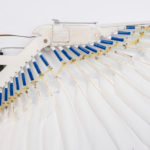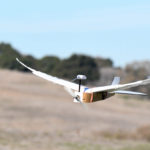‘PigeonBot’ brings flying robots closer to real birds
The “PidgeonBot” was created by Stanford researchers by dissecting the biomechanics of the avian morphing mechanism. Through analyzing the skeletal motion of birds, researchers were able to determine that only the emulation of the wrist and finger motion were needed to actuate all 20 primary and 20 secondary flight feathers. This led to the discovery that feathers moved via a simple automatic response to skeletal movement. This a great example of bio-observation to create a simple mechanism that was otherwise thought to be extremely complex.
Learn about our two Decals!
 Click here to find out more about our Fall Bioinspired Design Decal and our Spring Bioinspired Design in Action Decal – ALL MAJORS are welcome.
Click here to find out more about our Fall Bioinspired Design Decal and our Spring Bioinspired Design in Action Decal – ALL MAJORS are welcome.Berkeley BioDesign Community
 Click here to learn about the BioD: Bio-Inspired Design @ Berkeley student organization or here to signup for more info.
Click here to learn about the BioD: Bio-Inspired Design @ Berkeley student organization or here to signup for more info.Search
Student Login





I imagine that the neurological circuits underlying these processes are governed by both 2d spacing maps with their brains as…
to reduce the impact of car accidents, it may be possible to study the force diverting physics of cockroaches to…
you see this type of head-bobbing stability in many avian creatures related to pigeons like chickens. the head ability to…
not like they taught horses how to run! this is an example of convergent evolution where both sea creatures and…
The brain functions in a similar way with neuronal connections. our brains are able to utilize the multiplicity of connections…